
Yayoi Kusama, “Yellow Pumpkin,” 1994 (Stock Photos from Adam Rifi/Shutterstock)
To many people, coming up with a contemporary art definition can be a tricky task. While its title is simplistic and straightforward, its modern-day meaning is not as clear-cut. Fortunately, understanding what constitutes as “contemporary” is entirely possible once one traces the concept’s history and explores its underlying themes.
What is Contemporary Art?
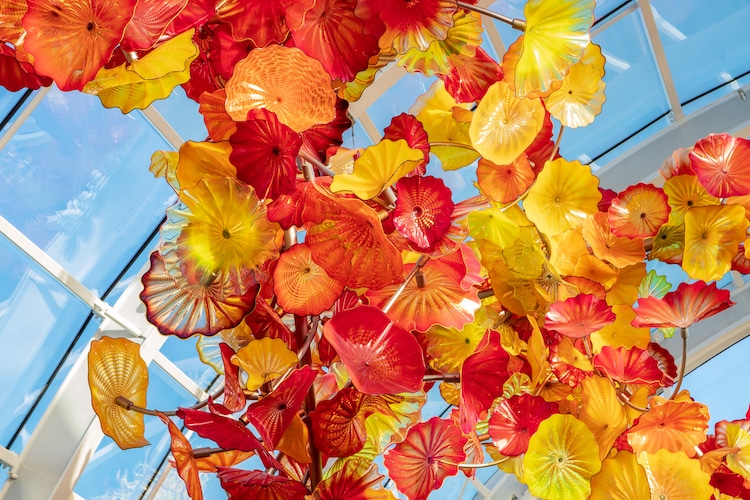
Chihuly Garden and Glass in the Seattle Center (Photo: Stock Photos from ApinBen4289/Shutterstock)
In its most basic sense, the term contemporary art refers to art—namely, painting, sculpture, photography, installation, performance, and video art—produced today. Though seemingly simple, the details surrounding this definition are often a bit fuzzy, as different individuals’ interpretations of “today” may widely and wildly vary. Therefore, the exact starting point of the genre is still debated; however, many art historians consider the late 1960s or early 1970s (the end of modern art, or modernism) to be an adequate estimate.
Major Contemporary Art Movements and Artists
Given its “art of today” definition, you may be surprised to hear that contemporary art actually has a relatively long history. To trace its evolution, let’s take a look at the major movements and important artists that compose its history.
Pop Art

Andy Warhol, “Flowers” (Photo: Stock Photos from Radu Bercan/Shutterstock)
Intended as a reaction to preceding modern art movements, contemporary art is thought to have begun on the heels of Pop Art. In post-war Britain and America, Pop Art was pioneered by artists like Andy Warhol and Roy Lichtenstein. It is defined by an interest in portraying mass culture and reimagining commercial products as accessible art. While the movement lasted roughly from the 1950s through the early 1970s, it was reborn as Neo-Pop Art in the 1980s thanks to artists like Jeff Koons.
Photorealism
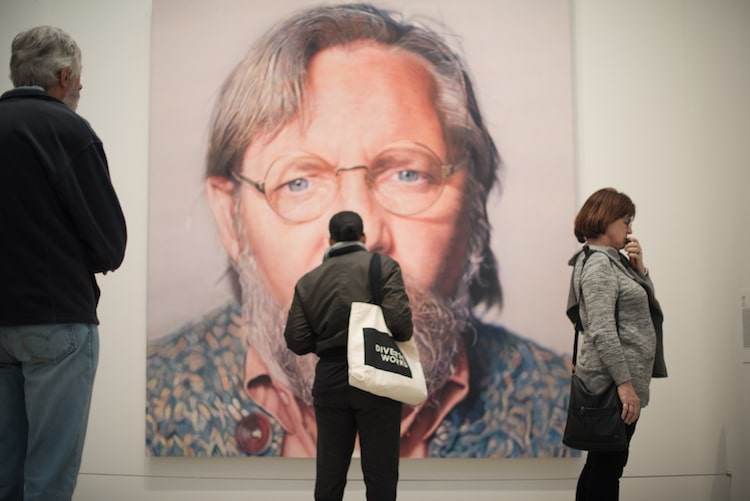
Portrait of Chuck Close (Photo: Stock Photos from Rushay/Shutterstock)
Much like artists working in the Pop Art style sought to artistically reproduce objects, those involved with Photorealism—a concurrent movement—aimed to create hyperrealistic drawings and paintings. Photorealists often worked from photographs, which enabled them to accurately reproduce portraits, landscapes, and other iconography. Chuck Close and Gerhard Richter often worked in this style.
Conceptualism
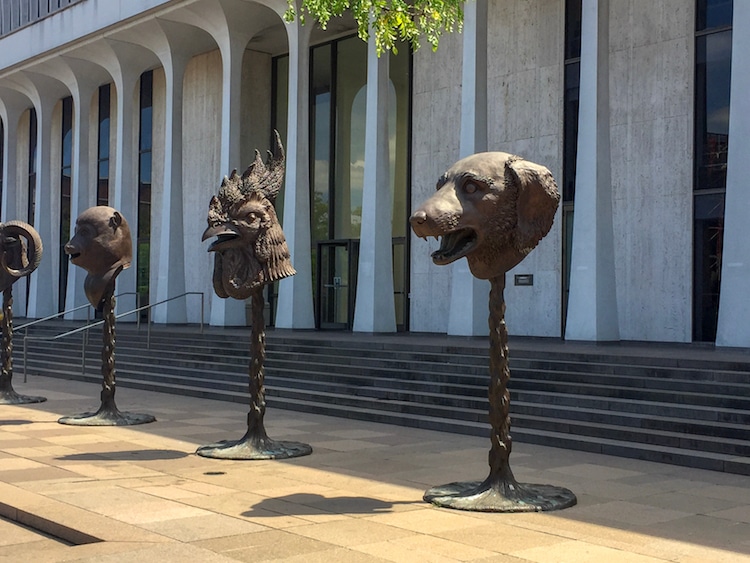
Ai Wei Wei, “Circle of Animals/ Zodiac Heads,” 2010 (Photo: Stock Photos from Alisa_Ch/Shutterstock)
In turn, Pop Art also helped shape Conceptualism, which rejected the idea of art as a commodity. In conceptual art, the idea behind a work of art takes precedence. Major conceptual artists include Damien Hirst, Ai Wei Wei, and Jenny Holzer. Though this experimental movement is rooted in art of the early 21st century, it emerged as a formal movement in the 1960s and remains a major contemporary art movement today.
Minimalism
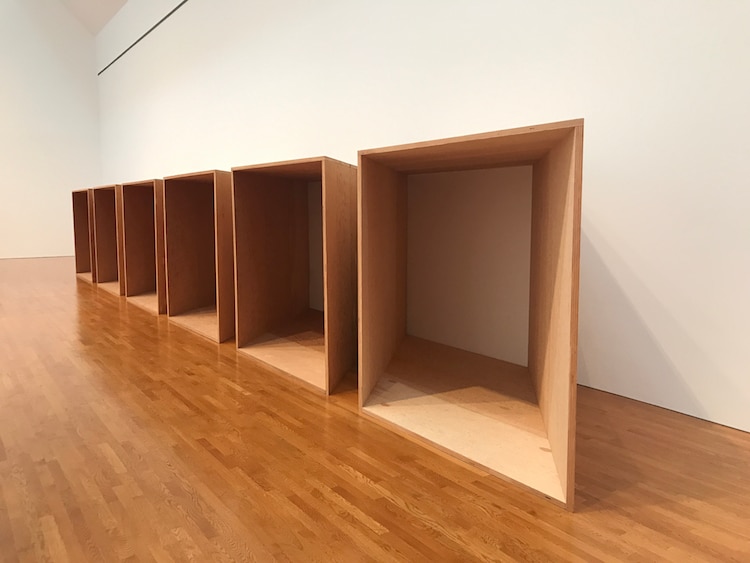
Donald Judd, “Untitled,” 1973 (Photo: Stock Photos from Todamo/Shutterstock)
Like Conceptualism, Minimalism materialized in the 1960s and is still prevalent today. According to the Tate, both movements “challenged the existing structures for making, disseminating and viewing art.” What sets Minimalism apart, however, is that its simple, abstract aesthetic invites viewers to respond to what they see—not what they think a given work of art represents. Donald Judd, Sol LeWitt, and Dan Flavin are some key Minimalist artists.
Performance Art
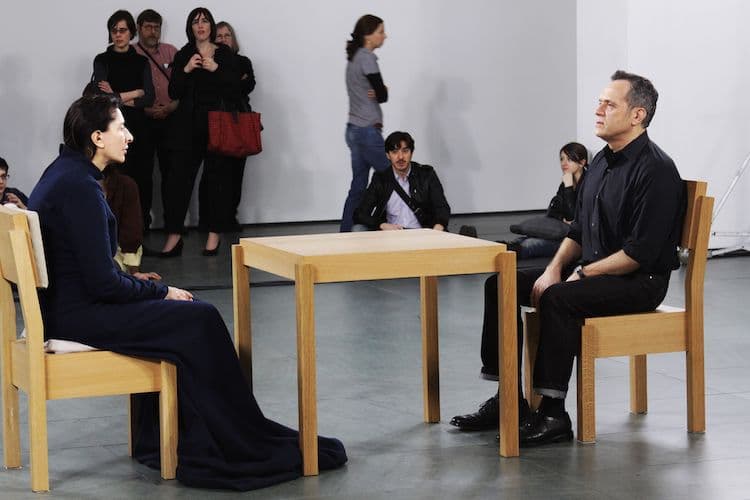
Photo: Public domain via Wikimedia Commons
Another movement with Conceptualist roots is Performance Art. Beginning in the 1960s and retaining its popularity today, performance art is a drama-inspired approach to art. While the art form is performed by artists (as the name suggests), it is not solely intended as entertainment. Instead, its goal is to convey a message or idea. Predominant performance artists include Marina Abramović, Yoko Ono, and Joseph Beuys.
Installation Art
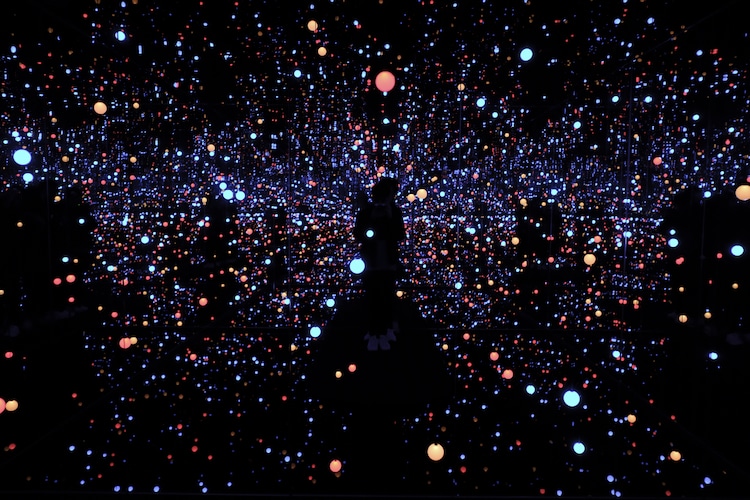
Yayoi Kusama, “Gleaming Lights of the Souls,” 2008 (Photo: Stock Photos from ephst/Shutterstock)
Like performance pieces, installation art is an immersive medium of art. Installations are three-dimensional constructions that transform their surroundings and alter viewers’ perceptions of space. Often, they’re large-scale and site-specific, enabling artists to transform any space into a customized, interactive environment. Well-known installation artists include Yayoi Kusama, Dale Chihuly, and Bruce Munro.
Earth Art
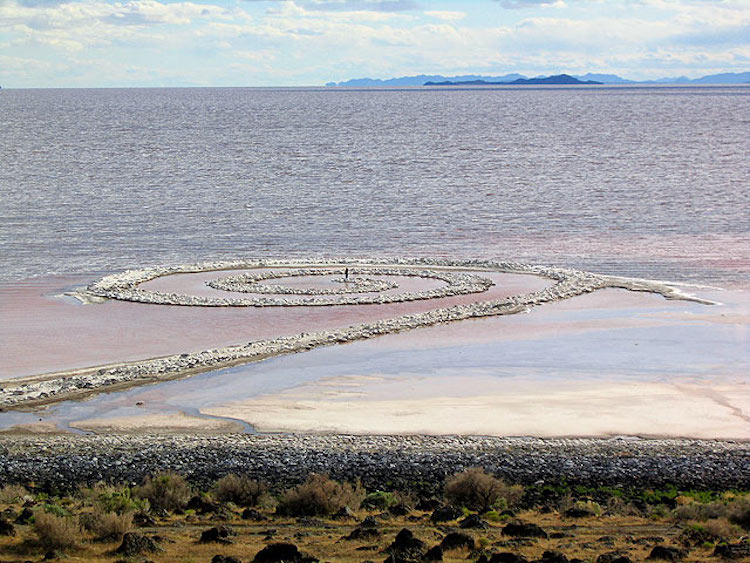
Robert Smithson, “Spiral Jetty” (Photo: Public domain via Wikimedia Commons)
A unique spin on installation art, Earth Art (or Land Art) is a movement in which artists transform natural landscapes into site-specific works of art. Robert Smithson, Christo and Jeanne-Claude, and Andy Goldsworthy are celebrated for their avant-garde earthworks.
Street Art
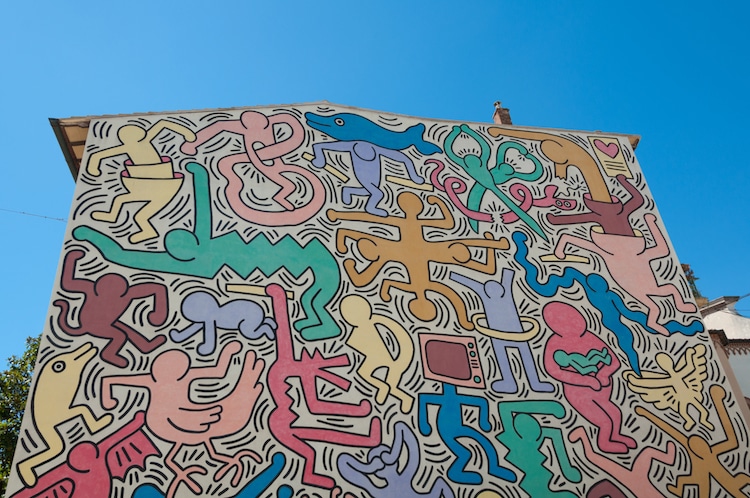
Keith Haring, “The Pisa’s Mural, 1989 by Stock Photos from peepy/Shutterstock
As one of the most recent contemporary art movements, street art is a genre that gained prominence with the rise of graffiti in the 1980s. Often rooted in social activism, street art includes murals, installations, stenciled images, and stickers erected in public spaces. Key street artists include figures from the 1980s, like Jean-Michel Basquiat and Keith Haring, as well as practicing artists like Banksy and Shepard Fairey.
Contemporary Art and the Digital Age

Photo: Stock Photos from mundissima/Shutterstock
Contemporary art is continuously evolving and more artists are taking advantage of new technology to further their creativity. This includes code-generated art, which can produce everything from abstract pieces to futuristic vector portraits. As advances in artificial intelligence continue, some artists are using the technology to create hyperrealistic portraits that test the boundary between reality and imagination.
Crypto art, which takes advantage of blockchain technology, has been picking up steam since 2020. With digital artist Beeple making a landmark $69 million sale at Christie‘s with his NFT collage, more artists and fine art institutions are seeing the possibilities in this form of art. Crypto art is allowing digital artists to monetize work that may have been previously difficult to sell. The boom in NFT art is allowing artists who create ephemeral pieces— whether installations, performances, or murals—to be compensated and collected in a manner that was previously unheard of.
Famous Contemporary Artists
Yayoi Kusama (1929–present)
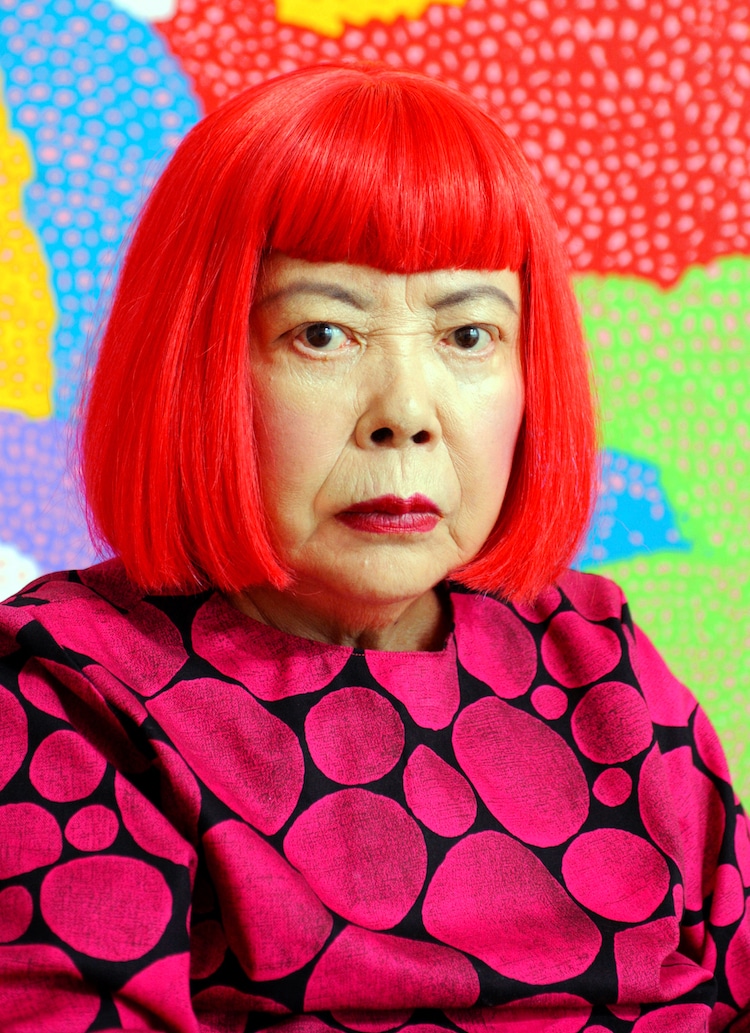
Photograph of Yayoi Kusama, 2016 (Photo: Wikimedia Commons, CC BY 4.0)
|
Full Name
|
Yayoi Kusama
|
|
Born
|
March 22, 1929 (Matsumoto, Japan)
|
|
Notable Artwork
|
Infinity Mirror Room
|
|
Movement
|
Conceptual Art
|
Japanese artist Yayoi Kusama is considered to be the most famous living female artist. Throughout her illustrious career, she has developed a signature approach to her craft. Characterized by polka dots, bold color palettes, and organic forms, her aesthetic is perhaps best typified by her pumpkin art, a collection of works celebrating the subject’s “generous unpretentiousness.”
Famous works of art: Infinity Mirror Room—Phalli’s Field (1965), Narcissus Garden (1966), Pumpkin series
Marina Abramović (1956–present)
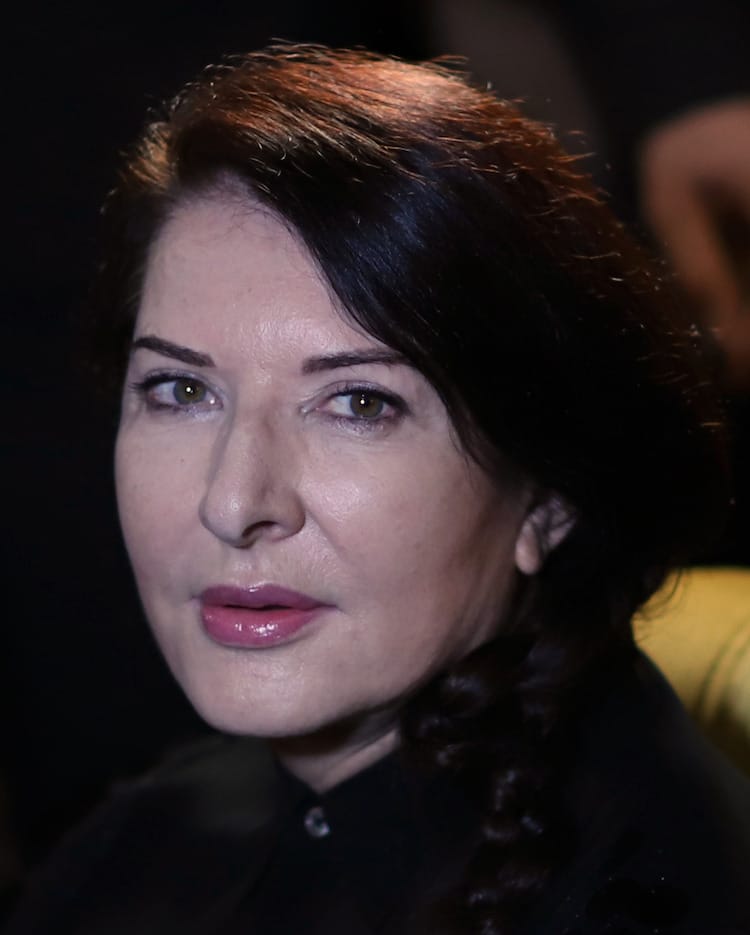
Photo of Marina Abramović, 2018 (Photo: Wikimedia Commons, CC BY-SA 2.0)
|
Full Name
|
Marina Abramović
|
|
Born
|
November 30, 1946 (Belgrade, Serbia)
|
|
Notable Artwork
|
Rythym 0, The Artist is Present
|
|
Movement
|
Performance Art
|
Known as the “grandmother of performance art,” Marina Abramović is a living legend with a career that spans more than 60 years. When she first emerged in the early ’70s, she changed the perception of performance art and invited people to question what is considered art. The Serbian American artist thinks of the human body as the “point of departure for any spiritual development.” Through her controversial experiments, she often endures dangerous and intense physical ordeals in order to explore a number of different themes, including the mind, human culture, purity, and control.
Famous works of art: Rhythm 0 (1974), The Artist is Present (2010)
Ai Weiwei (1957–present)
View this post on Instagram
|
Full Name
|
Ai Weiwei
|
|
Born
|
August 28, 1957 (Beijing, China)
|
|
Notable Artwork
|
Sunflower Seeds
|
|
Movement
|
Excessivism
|
Artist Ai Weiwei is undoubtedly the most well-known living Chinese creative today, but his country’s government doesn’t exactly give him the recognition he deserves. In communist China—where freedom of speech is tightly regulated—Ai’s varied portfolio of work doesn’t fetch the highest prices at auctions, and critics don’t sing his praises. Instead, the activist is viewed as a threat to the “harmonious society.” Through sculpture, film, installation, photography, and architecture—and across an array of materials including ceramics, marble, paint, and tea—Ai explores Chinese identity in the modern world as well as the culture’s social history.
Famous works of art: Dropping a Han Dynasty Urn (1995), Sunflower Seeds (2011)
Jean-Michel Basquiat (1960–1988)
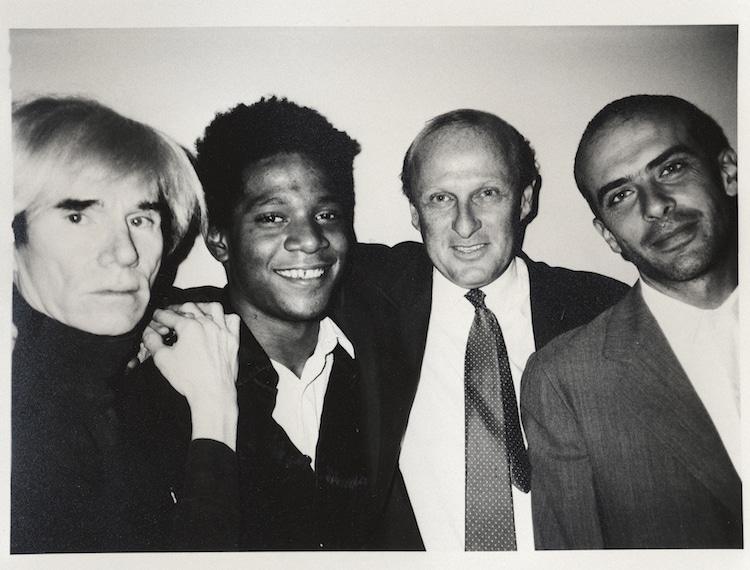
From left to right: Andy Warhol, Jean-Michel Basquiat, Bruno Bischofberger, and Fransesco Clemente, 1984 (Photo: Wikimedia Commons, CC BY-SA 4.0)
|
Full Name
|
Jean-Michel Basquiat
|
|
Born
|
December 22, 1960 (New York City, New York)
|
|
Died
|
August 12, 1988 (New York City, New York)
|
|
Notable Artwork
|
Untitled, Boy and Dog in a Johnnypump
|
|
Movement
|
Neo-expressionism
|
In the late 20th century, Jean-Michel Basquiat turned the contemporary art world on its head. Living and working in New York City in the 1970s and 80s, the young artist helped pioneer and popularize street art by bringing graffiti into the gallery—a monumental move that made the glitz and glamor of the art world accessible to people from all walks of life.
Famous works of art: Untitled (1982), Boy and Dog in a Johnnypump (1982)
Takashi Murakami (1962–present)
View this post on Instagram
|
Full Name
|
Takashi Murakami
|
|
Born
|
February 1, 1962 (Tokyo, Japan)
|
|
Notable Artwork
|
Mr. Dob series, Flowers
|
|
Movement
|
Superflat
|
Often referred to as “the Warhol of Japan,” Takashi Murakami is known for blurring the line between art and consumerism. His brightly colored, cheerful work draws inspiration from the Japanese subculture of otaku, a term used to describe people devoted to all things pop culture. Through his art, Murakami explores Japan’s contemporary culture as well as the West’s ever-growing influence on it.
Famous works of art: Mr. Dob series, The Lonesome Cowboy (1998), Flowers (2002)
Banksy (1974–present)
View this post on Instagram
|
Full Name
|
Unknown
|
|
Born
|
Unknown (Bristol, England)
|
|
Notable Artwork
|
Balloon Girl, Dismaland
|
|
Movement
|
Street Art
|
Known only by his pseudonym, Banksy is arguably the most famous street artist today. Since the 1990s, the elusive, England-based creative has been making politically and socially charged art, oftentimes with a sense of dark humor. While his face and true identity remain unknown, his portfolio of attention-grabbing art continues to shock and entice the world.
Famous works of art: Balloon Girl (2002), Love is in the Bin (2018)
What’s Next for Contemporary Art?
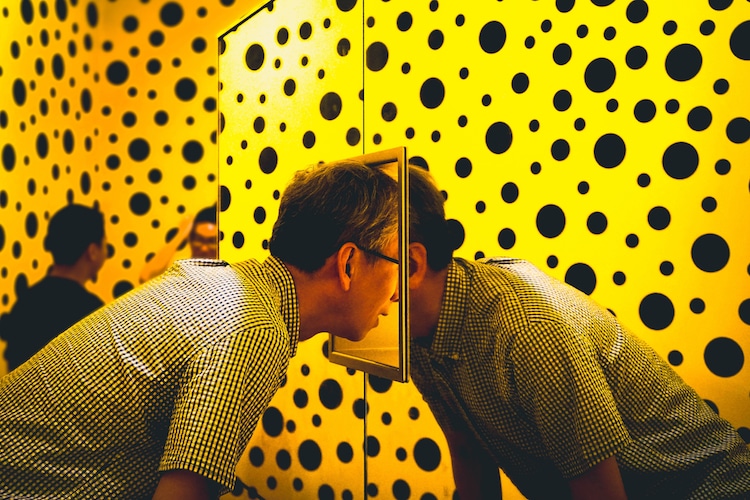
Stock Photos from mujiri/Shutterstock
While some of the artists we’ve looked at are either no longer alive or unable to practice, many aforementioned greats, including—but not limited to—Damien Hirst, Ai Wei Wei, Marina Abramović, Yayoi Kusama, and Jeff Koons, continue to create avant-garde works of painting, sculpture, installation, and performance art.
In addition to these famous figures, many up-and-coming contemporary artists are stunning the world with their original approach to art. On top of putting their own twists on conventional forms like painting, sculpture, and installation, they’ve also popularized unexpected forms of art, like embroidery, origami, and tattoos, proving the endless possibilities of the all-encompassing genre.
Frequently Asked Questions
What defines contemporary art?
Contemporary art refers to art—namely, painting, sculpture, photography, installation, performance, and video art—produced today.
How do you know if art is contemporary?
Art is considered contemporary if it was made in the late 20th and early 21st centuries.
This article has been edited and updated.
Related Articles:
10 of the Best Contemporary Art Museums to Visit Around the World
12 Contemporary Artists Tell Us What it Takes to Make a Great Piece of Art
